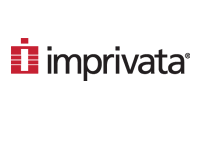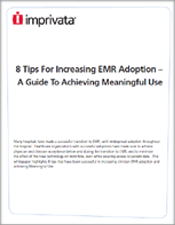Resource:
8 Tips for Increasing EMR Adoption - A Guide to Achieving Meaningful Use
Many hospitals have made a successful transition to EMR, with widespread adoption throughout the hospital. Organizations with successful adoptions have made sure to achieve physician and clinician acceptance before and during the transition to EMR - and to minimize the effect of the new technology on workflow.
Introduction: A Quick Overview of Meaningful Use
Healthcare in the US is undergoing unprecedented change. The federal government has implemented the Health Information Technology for Economic and Clinical Health (HITECH) Act in hopes of transforming the efficiency and effectiveness of health care. Hospitals are scrambling to comply with Meaningful Use objectives within the HITECH Act to earn financial incentives.
The HITECH Act, part of the American Recovery and Reinvestment Act of 2009, puts $17 billion towards modernizing health information technology systems. The Meaningful Use objectives and associated incentives are intended to ensure that hospitals and physicians don’t simply buy and install software and solutions, but that they integrate them in a significant way to improve the delivery of health care.
The Meaningful Use objectives are defined in three stages. Stage 1, taking place in 2011 through 2012, encourages the use of Electronic Medical Records for capturing and sharing data. Stage 2 (implementation by 2013) is about streamlining clinical processes, while Stage 3 (by 2015) focuses on improving health care outcomes. Each stage has financial incentives, penalties and deadlines from Medicare and Medicaid. As of this writing, hospitals face Medicare reductions if they cannot demonstrate Meaningful Use by 2015.
Also, EMR solution vendors must earn either a complete solution certification or “modular” certification for individual solutions for specific objectives. The modular certification is an important point, as many hospitals deploy multi-vendor environments with different component solutions for specific practices or parts of the health care environment.
This is a cursory description of a complex topic. For a more detailed description, see resources available at www.cms.gov/EHRIncentivePrograms. But there are several important points to note:
- Meaningful Use is a moving target: Exact objectives for each stage change in response to public comment. But hospitals that wait for finalization risk missing the full financial benefits of early compliance.
- Financial ramifications are steep: Hospital incentives include a $2 million potential base payment for early (mid-2012) adoption. And few hospitals are willing to risk reductions in Medicare reimbursements in 2015 if objectives are not met.
- It’s both a sprint and a marathon: Hospitals must act quickly to achieve full financial incentives, yet be ready to make decisions that support future stages.
To meet immediate and long-term objectives, while continuing to comply with existing security and privacy regulations, hospitals need to create a strong and flexible foundation for integrating technology with patient care.
Download the whitepaper to learn more.

